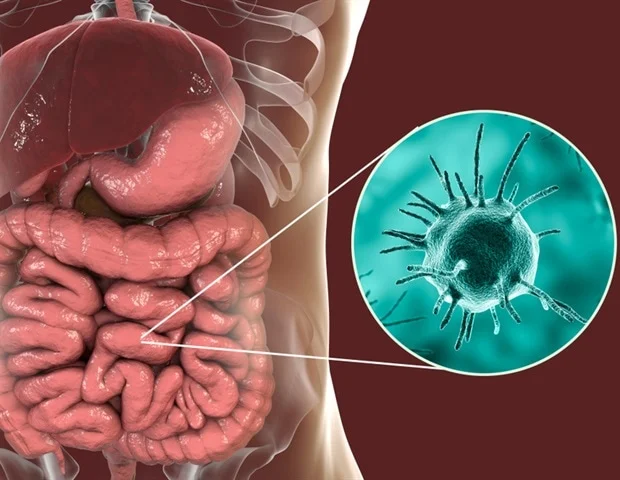Introduction
The healthcare industry is experiencing a profound transformation, driven by digital innovation and the increasing adoption of Internet of Things (IoT) technologies. Among these advancements, connected home medical sensor devices are emerging as game-changers in how we monitor, manage, and improve our health. These devices, which seamlessly integrate into our daily lives, are bridging the gap between patients and healthcare providers, creating a new era of proactive, personalized care.
Definition
A Connected Home Medical Sensor Device is a smart healthcare device designed for home use that monitors a person’s physiological data – such as heart rate, blood pressure, glucose levels, or activity – and transmits this information wirelessly to healthcare providers or digital platforms for analysis and remote care. These devices integrate sensors with connectivity technologies (e.g., Wi-Fi, Bluetooth, cellular) to enable real-time health tracking, early detection of medical issues, and improved patient management without requiring in-person visits.
What Are Connected Home Medical Sensor Devices?
Connected home medical sensors are smart devices equipped with sensors that track health metrics and transmit data to healthcare providers or cloud platforms via wireless technologies like Wi-Fi, Bluetooth, or cellular networks. These devices can track a variety of physiological indicators, including:
- Blood pressure
- Heart rate
- Blood glucose levels
- Oxygen saturation (SpO₂)
- Body temperature
- Respiratory rate
- ECG (Electrocardiogram) readings
- Sleep patterns and physical activity
Examples include smart glucose monitors for diabetes patients, wearable ECG patches for heart monitoring, and pulse oximeters that send oxygen level data to a mobile app in real time.
The Driving Forces Behind the Adoption
Several factors are fueling the rapid rise of connected home medical sensors:
1. The Shift to Preventive Care
Healthcare is moving from reactive treatment to preventive care. Instead of visiting a doctor after symptoms appear, patients now have tools to continuously monitor their health and detect issues early. This shift reduces the risk of chronic diseases and lowers long-term healthcare costs.
2. Growing Aging Population
With the global elderly population expanding, there is an increasing demand for home-based care solutions. Connected medical devices enable seniors to maintain independence while receiving continuous health monitoring, minimizing the need for frequent hospital visits.
3. Technological Advancements
Improvements in IoT, wireless connectivity, AI, and big data analytics have made it easier to collect, transmit, and analyze health data. Affordable sensors, smaller device sizes, and user-friendly interfaces make these technologies accessible to the average consumer.
4. Pandemic-Driven Remote Healthcare
The COVID-19 epidemic hastened the deployment of remote patient monitoring and telehealth technologies. Connected home devices became essential tools for doctors to monitor patients without physical contact, reducing infection risks while maintaining quality care.
Key Technologies Powering Connected Medical Sensors
The effectiveness of connected health devices relies on multiple cutting-edge technologies:
- IoT Connectivity – Enables for the smooth flow of data from sensors to medical platforms.
- AI and Machine Learning – Processes vast amounts of health data, identifies anomalies, and predicts health trends.
- Cloud Computing – Stores and manages patient data securely for real-time access.
- Mobile Apps – Provide users with intuitive dashboards for health insights.
- Blockchain – Ensures that sensitive health data is shared in a safe, unchangeable manner.
Benefits for Patients and Healthcare Providers
The rise of connected home medical sensors offers numerous advantages:
For Patients:
- Continuous Health Monitoring: Patients gain real-time insights into their health without waiting for periodic check-ups.
- Convenience: No need for frequent hospital visits; data is transmitted automatically.
- Early Detection: Sensors can identify early warning signs of conditions like heart disease or diabetes complications.
- Personalized Care: Data-driven insights allow for customized treatment plans.
For Healthcare Providers:
- Remote Patient Management: Doctors can monitor patients from anywhere, improving efficiency.
- Better Clinical Decisions: Real-time data supports accurate diagnosis and treatment.
- Resource Optimization: Reduces hospital readmissions and emergency visits.
- Population Health Management: Trends can be found and major health problems can be avoided with the use of aggregated data.
Challenges and Considerations
Despite their potential, connected home medical sensors face several challenges:
- Data Privacy and Security: It is essential to prevent breaches of sensitive patient data.
- Interoperability: Devices made by many vendors must function flawlessly together.
- Regulatory Compliance: Devices must meet medical standards and obtain necessary approvals (e.g., FDA clearance).
- Digital Divide: Access to technology remains limited in some regions, potentially widening healthcare disparities.
Real-World Applications and Examples
Connected medical sensors are already transforming healthcare across various domains:
- Cardiac Care: Continuous heart activity monitoring made possible by wearable ECG patches makes it possible to identify arrhythmias early.
- Diabetes Management: Continuous glucose monitors (CGMs) provide real-time glucose readings and alert users to fluctuations.
- Respiratory Health: Smart inhalers and oxygen monitors assist patients with asthma or COPD.
- Sleep Disorders: Wearable sensors and smart mattresses track sleep quality, helping diagnose conditions like sleep apnea.
Companies like Philips, Medtronic, and Abbott are leading the charge with innovative solutions, while startups are entering the market with affordable and user-friendly devices.
The Future of Connected Home Medical Sensors
Connected healthcare gadgets will develop exponentially during the next decade. According to industry forecasts, the global market for remote patient monitoring devices is expected to reach $117 billion by 2030, driven by the demand for personalized healthcare and chronic disease management.
Here are some future trends to watch:
- Integration with Smart Homes: Medical sensors will connect with home assistants like Alexa or Google Home for seamless health management.
- AI-Driven Predictive Analytics: AI will predict health events like heart attacks before they occur.
- Advanced Biosensors: Next-gen sensors will monitor multiple biomarkers from a single device.
- 5G Connectivity: Ultra-fast networks will enable real-time telemedicine and data transmission without delays.
Growth Rate of Connected Home Medical Sensor Device Market
According to Data Bridge Market Research, the connected home medical sensor device market was estimated to be worth USD 2.97 billion in 2024 and is projected to grow at a compound annual growth rate (CAGR) of 15.30% to reach USD 9.27 billion by 2032.
According to Data Bridge Market Research, the connected home medical sensor device market is expected to reach USD 9.27 billion by 2032, growing at a compound annual growth rate (CAGR) of 15.30% from its anticipated USD 2.97 billion in 2024.
Learn More: https://www.databridgemarketresearch.com/reports/global-connected-home-medical-sensor-device-market
Conclusion
Connected home medical sensor devices are not just a technological advancement—they represent a paradigm shift in healthcare delivery. By bringing continuous monitoring and personalized care into the home, these devices empower patients, support healthcare providers, and pave the way for a future where healthcare is proactive rather than reactive.















Leave a comment